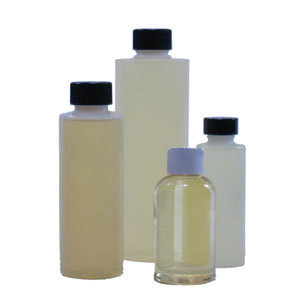It’s already Part 6 of this series and it is now time to discuss the use of fragrance in your new or existing candle-making hobby. Remember – if you have an aversion to scented candles, you are not under any obligation to incorporate fragrance when you are candle-making. On the other hand, if you prefer scented candles over unscented ones, you do not want to miss this article.
For candle-lovers, the fragrance of a candle is the single most important factor of purchase. It’s true! Think about the last time you purchased candles, whether you enjoy scented candles or not. If you don’t like candles with fragrance, then you probably made sure before purchasing that the candles were unscented. If you love a richly scented candle, you most likely took your time smelling each candle before buying. Either way, the scent of that candle was an important purchasing factor.
I have heard many people say, and I agree, that it can often be difficult to buy candles in a retail setting that have an adequate amount of fragrance – enough to have the whole house smelling great. This is why making your own candles and incorporating fragrance is so beneficial. You directly control how much or how little the candle “blooms” when lit, not to mention it being considerably less expensive than buying scented candles from the store. But wait! Before you go pouring your favorite quarter ounce bottle of essential oil into that melted wax, you need to learn about the different elements to adding fragrance to candles in order to achieve your desired end result.
The next time you are in a well-stocked craft store, check the candle-making aisle. You are likely to see two different catalysts for adding scent to candles. One is typically sold in a wafer or block form. It is a highly concentrated block of scented wax that one simply shaves pieces off of to add to their melted wax in order to scent it. The other medium is in oil form, usually found in quarter ounce bottles.
Fragrance blocks are popular with some candle-makers due to their convenience and relative low price. All the candle-maker needs to do is shave the desired amount of fragrance off the block, place it in the melted candle wax, and allow it to melt. It can also be easier to store since it is a solid material. Just place the remainder of the block in a ziploc bag for future use.
The potential downside to fragrance blocks is that they do not tend to be sold in a very wide range of scents. Moreover, they often do not provide for a very strongly scented candle. This can be a pro or a con, depending on the individual and whether a person likes their candles to be scented lightly or overwhelmingly.
Candle-making oils are also popular. Most stores do not carry a huge range of scent options, but they are widely available on the internet. A little bit of oil goes a long way in a batch of candle wax, so even though oil tends to be more expensive than fragrance blocks, oil lasts longer. Oils also have a tendency to create a very richly scented candle, depending on how much oil you add, which is great for candle-makers like myself who love a good scented candle. It is advisable to purchase individual droppers for each oil scent so as to not mix them accidentally. A simple eyedropper works perfectly.
Another thing worth noting when it comes to using oil fragrance in candles is that you should always use oils that are specifically made for use in candle-making. As mentioned above, candle-making oils are widely available online in hundreds of different scents, so you should have no difficulty in finding the scent you want.
Regardless of which option you choose, make sure to read the packaging on both the scent and the wax so that you know how much scent to add. Because the scent is dispersed away from the candle through the wick as the wax melts, adding too much scent can clog the wick and cause the candle to burn improperly or not at all. It can also cause excess smoking, which defeats the purpose of burning a scented candle in the first place.
Timing is also important when adding scents to melted candle wax. If the scent is added in the very beginning before the wax is even melted, it will evaporate away and leave the candle with a very weak or non-existent scent. What you want to do is add the scent at the very end, stir in thoroughly, then pour the wax into molds.
Adding scents to candles is extremely easy, but gives the candle-maker almost unlimited options. Play around with both the fragrance blocks and candle-making oils to find out which provides you with the most perfectly scented candle.



